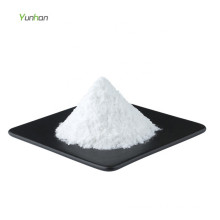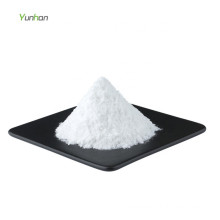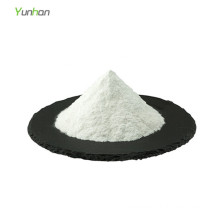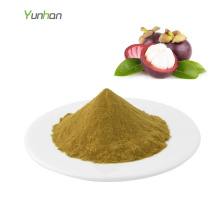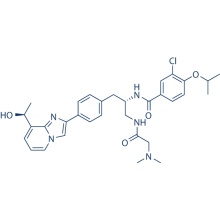Ispinesib (SB-715992) 336113-53-2
Product Description
.cp_wz table {border-top: 1px solid #ccc;border-left:1px solid #ccc; } .cp_wz table td{border-right: 1px solid #ccc; border-bottom: 1px solid #ccc; padding: 5px 0px 0px 5px;} .cp_wz table th {border-right: 1px solid #ccc;border-bottom: 1px solid #ccc; padding: 5px 0px 0px 5px;}
Molecular Weight:
517.06 Ispinesib (SB-715992, CK0238273) is a potent, specific and reversible inhibitor of kinesin spindle protein (KSP) with Ki app of 1.7 nM, no inhibition to CENP-E, RabK6, MCAK, MKLP1, KHC or Kif1A. Phase 2.
Biological Activity
Ispinesib is a potent, allosteric, reversible, and specific inhibitor of
KSP, which changes the binding property of KSP to microtubules and
disturbs its movement by inhibiting ADP release without altering the
release of the KSP-ADP complex from the microtubule. Ispinesib shows
potent cytotoxic activity in a panel of tumor cell lines, including
Colo205, Colo201, HT-29, M5076, Madison-109, and MX-1, with IC50 of 1.2
nM to 9.5 nM. In PC-3 prostate cancer cells, Ispinesib (15 nM and 30
nM) blocks cell proliferation and induces Apoptosis by regulating the
expression levels of genes that controls apoptosis, cell proliferation,
Cell Cycle, and cell signaling, such as EGFR, p27, p15, and IL-11. In a
panel of 53 breast cell lines, Ispinesib (7.4 nM–600 nM) demonstrates
broad inhibitory activity. In BT-474 and MDA-MB-468 cells, Ispinesib
(150 nM) induces apoptosis, as revealed by a higher proportion of
apoptotic cells, lower antiapoptotic Bcl-XL level, and higher proapoptotic Bax and Bid levels.
Ispinesib (4.5 mg/kg–15 mg/kg) exhibits inhibitory effects against
Colo205, Colo201, HT-29, but not MX-1 cells, in mouse xenograft models.
SB-715992 (6 mg/kg–10 mg/kg ) also inhibits murine solid tumors,
including Madison 109 lung carcinoma, M5076 sarcoma, as well as L1210
and P388 leukemias. In mice xenograft models of breast cancer cells
MCF-7, HCC1954, MDA-MB-468, and KPL4, Ispinesib (8 mg/kg–10 mg/kg)
inhibits tumor growth.
Protocol(Only for Reference)
Kinase Assay: [1]
Cell Assay: [4]
Animal Study: [4]
Conversion of different model animals based on BSA (Value based on data from FDA Draft Guidelines)
For example, to modify the dose of resveratrol used for a mouse (22.4 mg/kg) to a dose based on the BSA for a rat, multiply 22.4 mg/kg by the Km factor for a mouse and then divide by the Km factor for a rat. This calculation results in a rat equivalent dose for resveratrol of 11.2 mg/kg.
Chemical Information
Molarity Calculator
Dilution Calculator
Molecular Weight Calculator
Contact us if you need more details on 336113-53-2. We are ready to answer your questions on packaging, logistics, certification or any other aspects about Ispinesib 336113-53-2、SB-715992 336113-53-2. If these products fail to match your need, please contact us and we would like to provide relevant information.
Molecular Weight:
517.06 Ispinesib (SB-715992, CK0238273) is a potent, specific and reversible inhibitor of kinesin spindle protein (KSP) with Ki app of 1.7 nM, no inhibition to CENP-E, RabK6, MCAK, MKLP1, KHC or Kif1A. Phase 2.
Biological Activity
Ispinesib is a potent, allosteric, reversible, and specific inhibitor of
KSP, which changes the binding property of KSP to microtubules and
disturbs its movement by inhibiting ADP release without altering the
release of the KSP-ADP complex from the microtubule. Ispinesib shows
potent cytotoxic activity in a panel of tumor cell lines, including
Colo205, Colo201, HT-29, M5076, Madison-109, and MX-1, with IC50 of 1.2
nM to 9.5 nM. In PC-3 prostate cancer cells, Ispinesib (15 nM and 30
nM) blocks cell proliferation and induces Apoptosis by regulating the
expression levels of genes that controls apoptosis, cell proliferation,
Cell Cycle, and cell signaling, such as EGFR, p27, p15, and IL-11. In a
panel of 53 breast cell lines, Ispinesib (7.4 nM–600 nM) demonstrates
broad inhibitory activity. In BT-474 and MDA-MB-468 cells, Ispinesib
(150 nM) induces apoptosis, as revealed by a higher proportion of
apoptotic cells, lower antiapoptotic Bcl-XL level, and higher proapoptotic Bax and Bid levels.
Ispinesib (4.5 mg/kg–15 mg/kg) exhibits inhibitory effects against
Colo205, Colo201, HT-29, but not MX-1 cells, in mouse xenograft models.
SB-715992 (6 mg/kg–10 mg/kg ) also inhibits murine solid tumors,
including Madison 109 lung carcinoma, M5076 sarcoma, as well as L1210
and P388 leukemias. In mice xenograft models of breast cancer cells
MCF-7, HCC1954, MDA-MB-468, and KPL4, Ispinesib (8 mg/kg–10 mg/kg)
inhibits tumor growth.
Protocol(Only for Reference)
Kinase Assay: [1]
| Steady-State Kinetic Analysis of Human KSP ATPase Activity and Inhibition by Ispinesib | Kinesin specificity analysis is carried out using a pyruvate kinase-lactate dehydrogenase detection system that couples the production of ADP to oxidation of NADH. Absorbance changes are monitored at 340 nm. Steady-state studies using nanomolar concentrations of KSP are performed using a sensitive fluorescence-based assay utilizing a pyruvate kinase, pyruvate oxidase, and horseradish peroxidase (HRP) coupled detection system that couples the generation of ADP to oxidation of Amplex Red to fluorescent resorufin. Generation of resorufin is monitored by fluorescence (λexcitation = 520 nm and λemission = 580 nm). Steady-state biochemical experiments are performed in PEM25 buffer [25 mM Pipes-K+ (pH 6.8), 2 mM MgCl2, 1 mM EGTA] supplemented with 10 µM paclitaxel for experiments involving microtubules. The IC50 for steady-state inhibition is determined at 500 µM ATP, 5 µM Microtubules, and 1 nM KSP in PEM25 buffer. Ki app (apparent inhibitor dissociation constant) values of Ispinesib are extracted from the dose-response curves, with explicit correction for enzyme concentration by using the Morrison equation. Inhibitor modality (e.g., competitive, noncompetitive, uncompetitive, or mixed) under steady-state conditions is determined by measuring the effect of inhibitor concentration on initial velocity as a function of substrate concentrations. Data are fit using equations in GraFit to velocity equations for the various modes of inhibition. |
|---|
Cell Assay: [4]
| Cell lines | Breast cancer cells, including MCF-7, HCC1954, MDA-MB-468, and KPL4 |
|---|---|
| Concentrations | 0.085 nM–33 µM |
| Incubation Time | 72 hours |
| Method | Cells are plated in log phase of growth in 96-well plates and treated with Ispinesib for 72 hours. Then, cell growth is measured using CellTiter-Glo, and luminescence is detected using BioTek FLx800. Data are analyzed and the IC50 value, defined as the drug concentration that results in 50% growth inhibition relative to control, is calculated. |
Animal Study: [4]
| Animal Models | Nude (nu/nu) mice models of MCF7, KPL4, and HCC1954 cells; severe combined immunodeficient (SCID) mice model of MDA-MB-468 cells; |
|---|---|
| Formulation | Dissolved in 10% ethanol, 10% cremophor, and 80% D5W (dextrose 5%) |
| Dosages | 10 mg/kg for nude mice or 8 mg/kg for SCID mice |
| Administration | Intraperitoneal injection on a q4d× schedule (3 doses, every 4 day |
Conversion of different model animals based on BSA (Value based on data from FDA Draft Guidelines)
| Species | Baboon | Dog | Monkey | Rabbit | Guinea pig | Rat | Hamster | Mouse |
| Weight (kg) | 12 | 10 | 3 | 1.8 | 0.4 | 0.15 | 0.08 | 0.02 |
| Body Surface Area (m2) | 0.6 | 0.5 | 0.24 | 0.15 | 0.05 | 0.025 | 0.02 | 0.007 |
| Km factor | 20 | 20 | 12 | 12 | 8 | 6 | 5 | 3 |
| Animal A (mg/kg) = Animal B (mg/kg) multiplied by | Animal B Km |
| Animal A Km |
For example, to modify the dose of resveratrol used for a mouse (22.4 mg/kg) to a dose based on the BSA for a rat, multiply 22.4 mg/kg by the Km factor for a mouse and then divide by the Km factor for a rat. This calculation results in a rat equivalent dose for resveratrol of 11.2 mg/kg.
| Rat dose (mg/kg) = mouse dose (22.4 mg/kg) × | mouse Km(3) | = 11.2 mg/kg |
| rat Km(6) |
Chemical Information
| Molecular Weight (MW) | 517.06 |
|---|---|
| Formula | C30H33ClN4O2 |
| CAS No. | 336113-53-2 |
| Storage | 3 years -20℃Powder |
|---|---|
| 6 months-80℃in solvent (DMSO, water, etc.) | |
| Synonyms | CK0238273 |
| Solubility (25°C) * | In vitro | DMSO | 103 mg/mL (199.2 mM) |
|---|---|---|---|
| Water | <1 mg/mL ( | ||
| Ethanol | 103 mg/mL (199.2 mM) | ||
| * <1 mg/ml means slightly soluble or insoluble. * Please note that Selleck tests the solubility of all compounds in-house, and the actual solubility may differ slightly from published values. This is normal and is due to slight batch-to-batch variations. | |||
| Chemical Name | (R)-N-(3-aminopropyl)-N-(1-(3-benzyl-7-chloro-4-oxo-3,4-dihydroquinazolin-2-yl)-2-methylpropyl)-4-methylbenzamide |
|---|
Molarity Calculator
Dilution Calculator
Molecular Weight Calculator
Contact us if you need more details on 336113-53-2. We are ready to answer your questions on packaging, logistics, certification or any other aspects about Ispinesib 336113-53-2、SB-715992 336113-53-2. If these products fail to match your need, please contact us and we would like to provide relevant information.
Product Categories : Cytoskeletal Signaling > Kinesin Inhibitor
Other Products
Hot Products
Astragaloside AChlortetracycline HCl 64-72-2Paclitaxel 33069-62-4Dexamethasone Acetate 1177-87-3Dinaciclib (SCH727965) 779353-01-4CHIR-124 405168-58-3Ro3280 1062243-51-9TAME 901-47-3CCG-1423 285986-88-110058-F4 403811-55-2Dabigatran (BIBR 953) 211914-51-1H 89 2HCl 130964-39-5T0901317 293754-55-9Aprepitant 170729-80-3Turofexorate Isopropyl (XL335) 629664-81-9BMS-378806 357263-13-9


